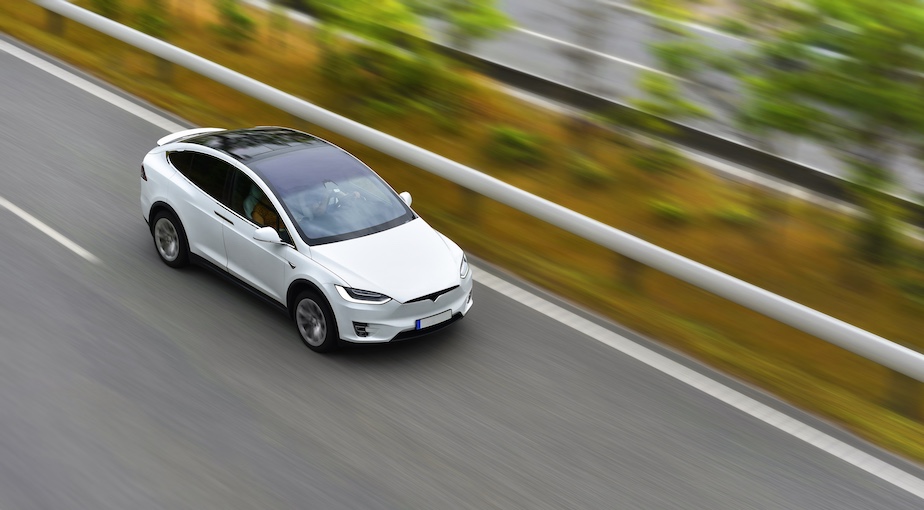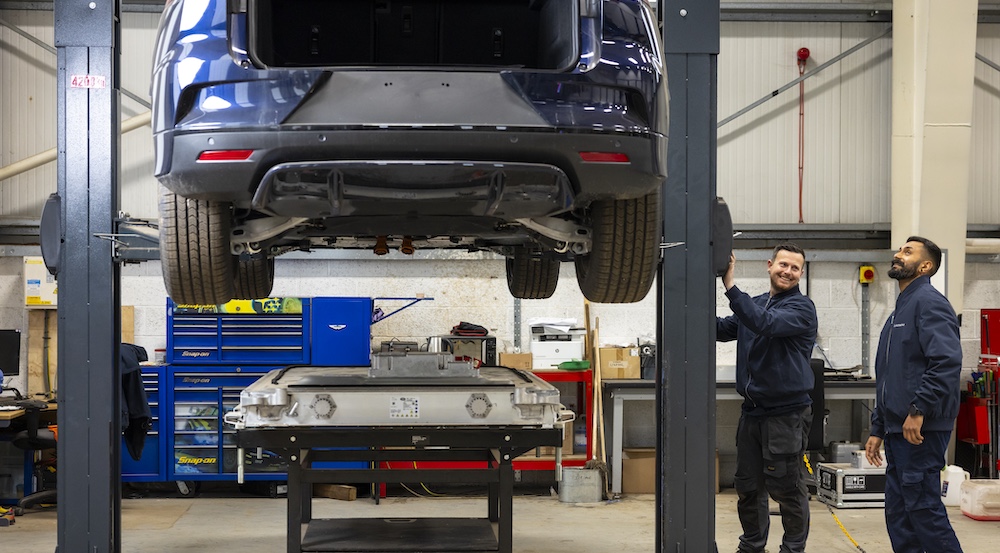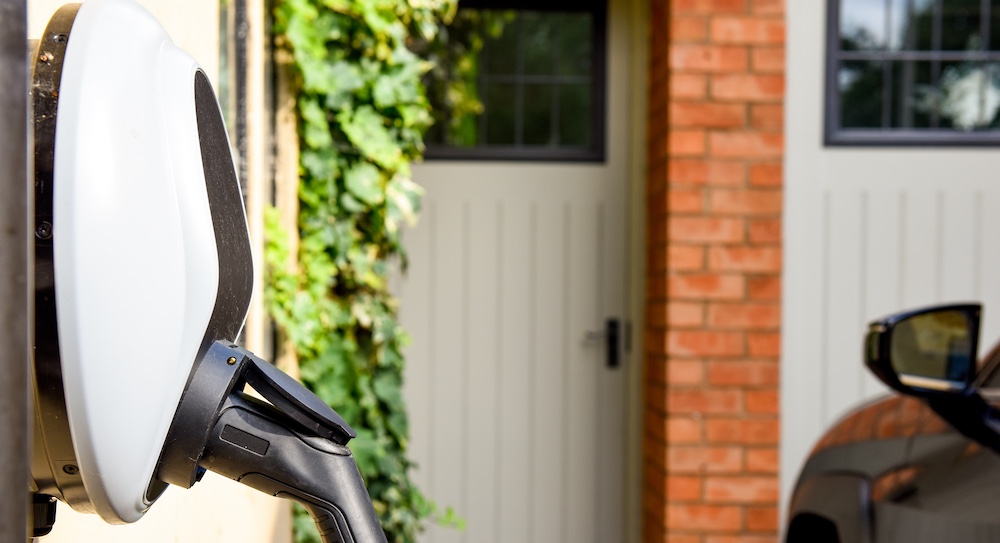EV car insurance: Costs, coverage, and tips for UK buyers
If you’re thinking of joining the almost 1.7m electric car drivers in the UK, researching EV ownership costs – including EV car insurance and repair costs – is probably top of your list.
EV car insurance provides different coverage from insurance for internal combustion engine (ICE) vehicles, and the historically higher average premiums might be stalling you from making the switch.
As policies need to take expensive battery systems and specialist repair requirements into consideration, as well as generally higher average purchase price for EVs, some of these higher costs may be making you feel like owning an EV is less affordable than sticking with a petrol or diesel vehicle.
But is EV insurance truly more complex than other car insurance? And is it really the cost barrier it seems to be?
Let’s explore how EV insurance works, what factors affect your premiums, and how to get the best value insurance policy.
How EVs insurance works in the UK
Just like insuring a petrol or diesel car, EV insurance in the UK is a legal requirement for you to drive your car on UK roads. The three main types of car insurance cover apply to electric vehicles.
Types of insurance coverage for electric and ICE vehicles
Third-party only
Third-party insurance covers the cost of damage or injury to other people and vehicles in an accident you’re at fault for. It doesn’t cover the cost of repairing your own vehicle. It also doesn’t cover you if your car is stolen, sets on fire, or is vandalised.
Third-party, fire and theft
Just like third-party only insurance, third-party, fire and theft insurance covers the other person and their vehicle involved in an accident you’re at fault for but doesn’t cover you or your own vehicle. This type of policy does cover your vehicle being stolen or setting on fire.
Fully comprehensive
This type of insurance policy covers the damage repair costs for all vehicles involved in an accident, including your own – even if you’re at fault for the accident. It also usually covers theft of your vehicle, fire damage and vandalism.
What makes EVs insurance different from ICE vehicle insurance?
Insurance is all about risk. Electric vehicle car insurance differs from petrol or diesel cars because the risk factors and repair requirements are different, which affects your insurance premiums.
Here are some of those factors that insurers look at, that differ to petrol or diesel cars.
- Cost of EV battery replacement or repair, and the requirement for battery-specific coverage (in EVs, the battery cost accounts for a significant chunk of the vehicle’s value)
- Cost of breakdown and recovery for electric vehicles, and availability of repair specialists in your local area
- Additional equipment required, like charging cables
- Advanced safety features of electric vehicles, which may lower accident or theft risks
Choosing the right EV insurance policy
While the structure of the policies remains largely the same, there are some key differences you’ll need to watch out for when you’re choosing car insurance for electric vehicles.
Because EVs come with different repair and recovery costs, as well as often using more expensive specialist parts and components, it's important to check your policy to make sure you have the right insurance coverage to cover your other EV ownership costs.
What to consider when choosing your EV insurance policy
Battery-specific coverage
Electric car batteries can cost thousands of pounds to replace, and are typically the most expensive part of the vehicle. That’s why it's important to check the coverage provided for your EV battery in your insurance policy, as the level of battery replacement or battery damage repair cover you want may not be included as standard.
Occasionally, manufacturers may sell you the car but lease you the battery to reduce the car’s purchase price. If your battery is leased, check whether the insurer will deal directly with the battery leasing company, and whether your leased battery is covered appropriately.
Charging equipment
Check if your policy includes cover for damage to your charging cable, home charger, or even public charging hardware if you’re charging on the go.
Some insurance coverage may also include liability if someone trips over or is injured by your charging setup, for example.
Repair requirements and stipulations
Depending on your EV purchase or lease agreement, you may be limited to certain manufacturer-approved garages. You may also find that your electric vehicle car insurance policy may stipulate how and where your car can be repaired under their cover (typically EV-certified garages).
Ensure you have those approved repair specialists in your area, to keep your travel costs down if your car needs repairing.
Breakdown or recovery arrangements specific to EVs
Check if your EV’s insurance policy includes EV-specific rescue if you break down or are involved in an accident, or if your battery runs out of charge on a journey. For example, the recovery vehicle may bring a mobile charger, or your policy may cover the cost of you being towed to the nearest public charger.
General policy coverage
As with any car insurance, you’ll want to check that you’re happy with policy basics such as the general type of cover you have (like fully comprehensive insurance, or third party), the excess you’ll pay if you need to make a claim, and if there are any policy add-ons you want to include or remove (such as legal expenses cover, no claims bonus protection or being provided with a courtesy car).
Comparing EV insurance costs vs ICE vehicles
Insurance costs for EVs vs ICE cars do, on average, tend to be higher.
Here’s a comparison from MoneySuperMarket for annual car insurance premiums to see how EVs compare.

There’s more to deciding the price of your premiums than simply the fuel type of car you drive. As well as costs being influenced by the car itself (like the purchase price and market value of the car, repair costs, how old the car is and what safety features it has), your insurer will also be factoring in you as the driver, your driving history and how and where you use or park the car.
Don’t let higher average insurance premium costs put you off from choosing an electric vehicle. Taking into account other EV ownership costs such as charging costs, electric vehicles can be significantly cheaper to run overall than their petrol counterparts.
Tips for reducing your EV insurance premiums
Just like with any insurance policy, there are things you can do to help reduce the premiums of your EV insurance.
Compare car insurance for electric vehicles from multiple providers
Whether you’re looking for your first EV insurance policy or your existing policy is ending, shop around and make a policy comparison from different insurers. Don’t just look at the price – make sure you check what’s covered on the policy (including the excess) to get the best value and the most appropriate cover for what you need.
Things in the EV market are also changing pretty quickly, with an increasing number of EVs on the road and an increasing number of specialist technicians and garages geared up to repair them, you may find your policy premiums are coming down in future.
Use telematics or pay-as-you-drive schemes
Telematics insurance, also known as black box insurance, uses tech like a smartphone app or a small box fitted to your vehicle to monitor your driving behaviour.
Because insurers can check in real-time how safe your driving is, such as how often you exceed the speed limit, how often you need to brake quickly, and how you handle the car steering, the insurer has more personalised data on your risk factors as a driver, and therefore how likely you are to need to make a claim on the policy.
As well as encouraging safer driving habits, this can help to lower your premiums at renewal, and sometimes even lead to refunds partway through your policy.
Pay-as-you-drive policies focus less on your general behaviours as a driver and more on how far you travel – the less you use the car, the less insurance you pay. Typically, a telematics box is fitted to your car to record your mileage automatically, and your policy will either be on a pay-per-mile basis or a total mileage limit in a year.
Maximise no-claims discounts
No-claims discounts can sometimes save hundreds of pounds on car insurance for electric vehicles, and work the same as petrol or diesel car insurance policies, providing you with a discount based on the number of consecutive years you’ve held a policy and not made a claim.
No-claims discounts apply no matter what type of car you’ve insured, whether that’s petrol, diesel, electric or hybrid, as long as it’s a like-for-like policy (e.g. your own private car insurance, rather than commercial use, or from a different type of vehicle like a van).
Consider home charging location safety
With any type of vehicle, if your car is parked off-street and secured overnight (for example, on a private driveway or in your garage), then the risk of theft, damage or vandalism is much lower. With an EV, consider where you install your home EV charger to ensure your car is at a low risk when it’s parked up and charging.
EV car insurance: conclusion
On the whole, EV car insurance in the UK works much like insurance for petrol or diesel cars, with a few key differences in coverage. Insurance premiums for EVs are currently higher on average because parts and repair costs are higher. But as EV adoption rates increase, there’s a good chance that these prices will fall in future to be more in line with other types of cars.
For now, there are plenty of things you can control that will influence what you pay, such as the model and value of EV that you drive, how and where you park and charge it, and which type of policy you choose, as well as making a policy comparison to check you’re getting the best value.
Even with a higher average insurance cost, EV ownership costs are still lower on average than petrol or diesel cars. If you want to learn more about how much it costs to own an electric vehicle, take a look at our guides on EV ownership costs, EV charging costs and current EV grants.








